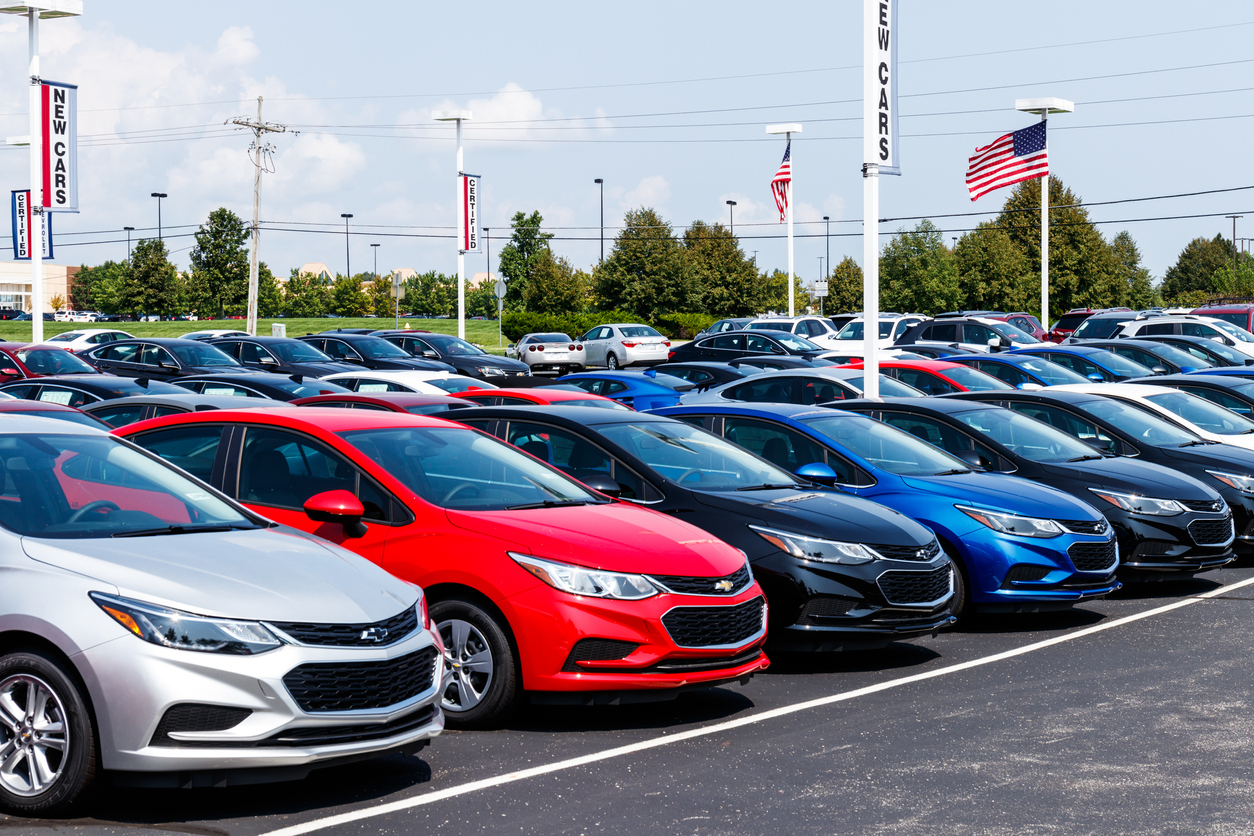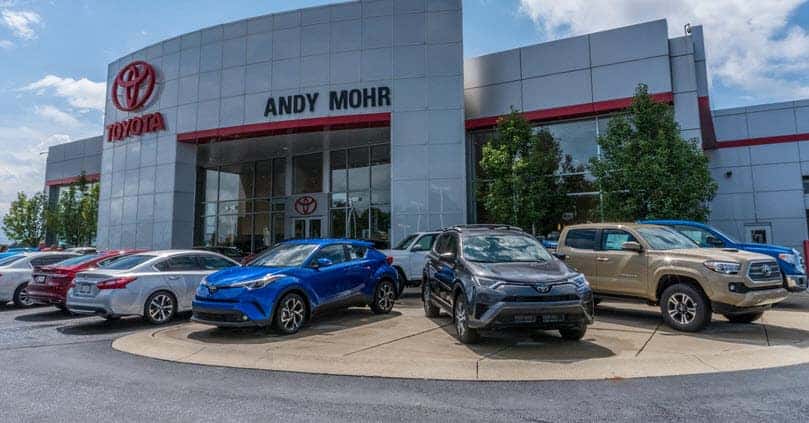Defining the Local Market

Understanding the local used car market is crucial for success in a used car dealership. This involves analyzing factors like local economic conditions, competitor activity, demographic trends, and popular vehicle types to tailor strategies for optimal performance. A thorough understanding of these aspects allows for a more targeted approach, maximizing profitability and customer satisfaction.
Factors Influencing Used Car Dealership Demand
Several factors significantly impact demand for used cars in a specific geographic area. These include local economic conditions, employment rates, population density, and the presence of major employers. A strong job market often translates to higher demand for vehicles, while economic downturns can reduce it. The age and composition of the local population also play a role. For instance, areas with a large number of young families may see a higher demand for compact SUVs and smaller vehicles.
Identifying Local Competitors and Their Strengths/Weaknesses
Thorough competitor analysis is essential for success. This involves researching existing used car dealerships in the area to identify their strengths and weaknesses. Key areas to examine include pricing strategies, inventory selection, marketing approaches, customer service reputations, and overall business model. Direct observation of competitor locations, advertising campaigns, and customer reviews will provide a clear understanding of their market positioning and target audience.
Analyzing Local Used Car Market Demographics
Demographic analysis provides valuable insights into the local market. This involves examining the age, income, occupation, and vehicle preferences of potential customers. Data sources like census reports, local employment data, and market research reports can provide relevant information. For example, a high concentration of young professionals in a city may indicate a greater demand for fuel-efficient compact cars.
Typical Pricing Models and Negotiation Strategies
Pricing models vary among dealerships. Some dealerships employ a fixed-price model, while others use a negotiable pricing structure. Understanding the prevailing pricing trends in the local market is essential for setting competitive prices. Negotiation strategies should be tailored to the specific market conditions and customer profile. For instance, in areas with high competition, offering competitive prices from the start and demonstrating transparency in pricing may be crucial. Negotiation strategies should always consider the balance between profit margins and customer satisfaction.
Common Types of Used Cars Popular in the Area
Popular used car types are often influenced by factors like local demographics, economic conditions, and lifestyle preferences. Analyzing local trends helps dealerships tailor their inventory accordingly. Areas with a high concentration of families may show higher demand for reliable SUVs and minivans. On the other hand, areas with a large number of young professionals may have a greater demand for compact cars and fuel-efficient models. Conducting market research and tracking sales data can help dealerships understand these trends.
Analyzing Dealership Features
Understanding the nuances of different used car dealerships is crucial for a successful car-buying experience. This analysis delves into the various models, highlighting key features, services, and customer feedback to empower informed decision-making. Choosing the right dealership requires careful consideration of factors like inventory, financing options, and the quality of service.
This section examines critical aspects of used car dealerships, from the structure of independent versus franchised operations to the range of services offered and typical customer experiences. It will also address the frequent questions consumers have regarding these dealerships, providing helpful insights for potential buyers.
Independent vs. Franchised Dealerships
Used car dealerships operate under various models, each with its own advantages and disadvantages. Understanding these differences helps consumers make informed choices.
| Feature | Independent Dealership | Franchised Dealership |
|---|---|---|
| Ownership | Owned and operated by an individual or a small group. | Part of a larger, national or regional network. |
| Inventory | May focus on a specific niche or have more diverse inventory, depending on the owner’s expertise and market analysis. | Typically offers a wider variety of makes and models due to the network’s reach and inventory management. |
| Pricing | Potentially more competitive pricing, based on market research and individual negotiation. | Pricing often follows a standardized model, though negotiations are still possible. |
| Service Capabilities | Service offerings may be limited or focused on specific areas depending on the owner’s expertise. | Usually offers a broader range of services, often aligning with the national or regional franchise standards. |
| Support and Resources | May have limited access to resources and support compared to franchised dealerships. | Offers access to a network of resources, including training and support from the franchisor. |
Important Aspects in Choosing a Dealership
Selecting the right used car dealership involves evaluating several crucial elements. A comprehensive approach ensures a positive and successful buying experience.
- Service offerings: Dealerships providing comprehensive services, including maintenance, warranties, and extended service plans, are often preferred. These services can provide peace of mind and value to the buyer. For example, a dealership that offers certified pre-owned programs demonstrates a commitment to quality and customer satisfaction.
- Inventory diversity: A wide range of makes and models provides more options for buyers. Factors like vehicle condition, mileage, and year should be carefully considered.
- Financing options: A dealership that provides various financing options, including in-house financing and partnerships with lenders, makes the process more convenient and flexible for customers. This allows for tailored financial solutions based on individual needs and circumstances.
Service Offerings at Used Car Dealerships
Used car dealerships offer various services to support the buying and ownership experience.
- Vehicle inspections: Many dealerships provide thorough inspections to ensure the vehicle’s mechanical condition and identify potential issues.
- Warranty options: Dealerships may offer various warranty packages, from basic warranties to extended service plans.
- Financing and lending: Dealerships can provide various financing options and partnerships with lenders to assist customers in securing a loan.
- Trade-in appraisals: Dealerships offer trade-in valuations to help customers determine the worth of their existing vehicle.
Customer Reviews and Feedback
Understanding customer experiences provides valuable insights into the performance and reputation of used car dealerships in the local market.
- Positive feedback: Dealerships receiving positive reviews often demonstrate expertise in customer service, transparent communication, and fair pricing. This is vital in building trust and positive customer relationships.
- Negative feedback: Negative feedback points to areas where dealerships need improvement, such as addressing customer complaints, enhancing communication, or providing more comprehensive services.
Frequently Asked Questions (FAQ)
Addressing common customer inquiries about used car dealerships can simplify the buying process.
- How do I choose the right used car? Consider your needs, budget, and desired features. Research different models and compare prices.
- What are the typical financing options available? Inquire about various financing options and compare interest rates.
- What are the services offered by the dealership? Ask about services like inspections, warranties, and trade-in appraisals.
Customer Journey & Needs

Understanding the needs and expectations of used car buyers is crucial for success in the used car market. Potential customers are driven by a mix of factors, including price, vehicle condition, features, and the overall experience. A strong understanding of their journey, from initial research to final purchase, allows dealerships to tailor their offerings and services to meet these needs effectively.
The used car market is highly competitive, demanding dealerships to offer a compelling customer experience, both online and in-person. This involves streamlining the process, providing accurate information, and building trust with potential buyers. Effective strategies address the pain points, ensuring a positive and efficient transaction for everyone involved.
Typical Customer Needs and Expectations
Used car buyers prioritize value for their money. They expect transparency in pricing, accurate vehicle condition assessments, and clear communication throughout the entire process. Many customers want a quick and efficient experience, minimizing the time and effort needed to secure their desired vehicle. Furthermore, a significant portion of buyers seeks a trusted and reliable dealership to help navigate the complexities of used car purchases. Safety, reliability, and fuel efficiency are often key factors considered during the decision-making process.
Comparison of Online and In-Person Experiences
The online experience plays a crucial role in attracting and engaging potential buyers. A well-designed website with detailed vehicle listings, high-quality images, and transparent pricing is essential. Conversely, in-person interactions provide the opportunity to address questions directly, inspect the vehicle thoroughly, and build a rapport with sales personnel. The best dealerships leverage both channels, seamlessly integrating online research with a positive in-person experience. This combination ensures a comprehensive understanding of the vehicle and the dealership, building trust and confidence in the purchase decision.
Methods for Finding Information About Used Cars
Potential buyers employ various methods to gather information about used cars. Online searches on platforms like Autotrader, Kelley Blue Book, and Edmunds are common starting points. Word-of-mouth referrals from friends and family, and reviews from trusted online communities, are also highly influential. Dealership websites and social media platforms provide a further opportunity for potential buyers to learn about available vehicles and the dealership itself. A comprehensive understanding of the different sources used by potential buyers allows dealerships to target their marketing efforts effectively.
Step-by-Step Process for Finding a Suitable Used Car
1. Initial Research: Potential buyers start by defining their budget, desired vehicle type, and specific features. They utilize online resources to identify suitable options within their criteria.
2. Vehicle Selection: Once a list of potential vehicles is compiled, detailed information about each vehicle is reviewed. Buyers often check for reviews, safety ratings, and service history, comparing prices and features across different models.
3. Pre-purchase Inspection: This step involves a thorough examination of the vehicle, ideally with a mechanic if possible. The focus is on identifying any potential issues, ensuring the vehicle aligns with the expected condition and specifications.
4. Negotiation and Financing: This stage involves discussing the price with the dealership, considering factors like trade-in value and financing options. Understanding the terms and conditions of the purchase is crucial.
5. Finalization: Once an agreement is reached, the buyer completes the necessary paperwork and takes ownership of the vehicle. This step emphasizes the importance of a clear and transparent process.
Common Pain Points for Customers
Common pain points for used car buyers include concerns about vehicle condition, hidden defects, and a lack of transparency in pricing. The fear of being misled or overcharged is prevalent, highlighting the importance of building trust and providing accurate information. The lack of clear communication throughout the purchase process, including potential delays or complications, can also be a source of frustration for customers. Effective communication and transparency throughout the transaction can mitigate these concerns, ensuring a smooth and positive experience.
Online Presence & Search Optimization
A strong online presence is crucial for used car dealerships to attract customers and compete effectively in today’s digital market. Optimizing the online experience, from website design to search engine rankings, directly impacts lead generation and sales conversions. By strategically leveraging online tools and showcasing inventory effectively, dealerships can significantly increase visibility and establish a strong brand image.
A well-designed website, coupled with optimized search engine listings, serves as a 24/7 sales channel. This digital storefront allows potential buyers to explore vehicles, research prices, and contact dealerships conveniently, ultimately streamlining the entire customer journey.
Effective Website Layouts
A user-friendly website design is paramount for a positive customer experience. Intuitive navigation, clear vehicle listings, and a visually appealing layout contribute to a more engaging website. Effective layouts prioritize user needs, enabling quick access to information and facilitating seamless transactions.
| Layout Type | Description | Strengths |
|---|---|---|
| Mobile-First Design | Prioritizes the mobile experience, ensuring optimal viewing on all devices. | Improved user experience across all platforms, better search engine rankings. |
| Clean and Minimalist Design | Focuses on simplicity, emphasizing clear information architecture. | Enhanced visual appeal, improved navigation, quicker loading times. |
| Interactive Inventory Listings | Includes detailed images, videos, and specifications for each vehicle. | Increases customer engagement, allowing potential buyers to explore vehicles thoroughly. |
| Customer Reviews & Testimonials | Displays positive reviews and testimonials from previous customers. | Builds trust and credibility, encouraging potential buyers to engage with the dealership. |
Essential Online Tools
A robust online presence requires a combination of tools to manage inventory, engage customers, and optimize search visibility. These tools facilitate effective communication, enhance transparency, and streamline the customer journey.
- Online Inventory Management System:
- Customer Review Platforms:
- Automated Email Marketing:
- Live Chat Functionality:
This system facilitates the management of inventory details, including vehicle descriptions, specifications, images, and pricing. Real-time updates and easy accessibility for potential buyers are key advantages.
Integrating platforms like Google My Business, Yelp, and Facebook allows customers to share their experiences. Responding to reviews promptly and professionally demonstrates a commitment to customer satisfaction.
Sending targeted emails about new arrivals, special offers, or service updates can engage customers and increase traffic.
Providing real-time support through live chat enables immediate assistance for potential buyers, fostering trust and addressing questions quickly.
Compelling Car Descriptions
Crafting compelling descriptions is essential for capturing the attention of potential buyers. Clear, concise language, highlighting key features, and using relevant s are vital elements.
- Detailed Features:
- Benefit-Oriented Language:
- s and Search Terms:
Highlighting specific features, such as horsepower, fuel economy, or safety features, provides valuable information.
Focus on the benefits each feature provides to the customer, rather than just listing specifications. For example, instead of “4-cylinder engine,” use “Efficient and reliable 4-cylinder engine.”
Including relevant s, such as make, model, year, and specific features, improves search engine visibility.
Showcasing Inventory Online
Visuals are critical in showcasing inventory online. High-quality images and videos provide potential buyers with a comprehensive understanding of the vehicles. Clear details and accurate information contribute to a positive buyer experience.
- High-Resolution Images:
- Professional Videos:
- Detailed Specifications:
Use high-resolution images to showcase the vehicle’s exterior and interior, highlighting its condition.
Videos provide a dynamic perspective, demonstrating the vehicle’s features and condition.
Providing detailed specifications, including mileage, options, and maintenance history, builds transparency and trust.
Search Engine Optimization Strategies
Optimizing for search engines is crucial for increasing online visibility. Implementing strategies to improve search engine rankings leads to greater exposure and ultimately, higher conversion rates.
- Research:
- On-Page Optimization:
- Off-Page Optimization:
- Local Optimization:
Identifying relevant s and incorporating them into website content, descriptions, and titles.
Optimizing website elements like title tags, meta descriptions, and header tags to improve search engine visibility.
Building backlinks from reputable websites and directories.
Optimizing listings on local search platforms like Google My Business.
Future Trends & Projections

The used car market is dynamic and constantly evolving, influenced by macroeconomic factors, technological advancements, and shifting consumer preferences. Understanding these future trends is crucial for used car dealerships to adapt and thrive in the years to come. This analysis will explore potential developments, impacts, and challenges.
Potential Trends in the Used Car Market
The used car market is experiencing a period of significant change. Factors like increasing demand for specific vehicle types (e.g., electric vehicles, SUVs), the rise of online marketplaces, and evolving consumer expectations are reshaping the landscape. Economic conditions, including inflation and interest rates, also exert a considerable influence. Furthermore, environmental concerns are impacting consumer choices, leading to a greater interest in fuel-efficient and sustainable vehicles.
Impact of Technological Advancements on Dealerships
Technological advancements are rapidly transforming the used car industry. Digital platforms, online inventory management systems, and customer relationship management (CRM) tools are becoming essential for efficiency and competitiveness. The rise of artificial intelligence (AI) and machine learning (ML) is enabling more accurate vehicle valuations, personalized customer experiences, and streamlined operational processes. Examples include AI-powered chatbots for customer service and automated inventory management systems. Dealerships that embrace these technologies will be better positioned to adapt and succeed.
Future Customer Needs in the Used Car Market
Customers are increasingly seeking transparent, efficient, and personalized experiences in the used car market. Demand for online research tools, virtual test drives, and secure online transactions is growing. Customers also value comprehensive vehicle history reports, accurate pricing, and reliable after-sales service. The desire for environmentally friendly options, such as electric vehicles, is another important trend. This indicates a need for dealerships to prioritize customer convenience and digital capabilities.
Potential Challenges for Used Car Dealerships
Used car dealerships face several challenges in the coming years. Competition from online marketplaces and direct sales from manufacturers will intensify. Maintaining profitability in a volatile market, managing inventory effectively, and attracting and retaining skilled staff will also be critical. The need for specialized knowledge in electric vehicles and other emerging technologies will be a significant hurdle for some dealerships. Furthermore, adapting to changing regulatory standards related to vehicle emissions and safety will be crucial.
How Dealerships Might Adapt to These Trends
To thrive in the future, used car dealerships must adapt to the changing landscape. This includes investing in digital platforms, adopting advanced technologies, and building robust online presence. Offering personalized customer service, transparent pricing, and comprehensive vehicle history reports are essential strategies. Building strong customer relationships, particularly through digital channels, will be vital. Moreover, dealerships must focus on acquiring and retaining qualified staff with expertise in emerging technologies, including electric vehicle maintenance and repair. They also need to remain adaptable and responsive to the changing demands of the market.